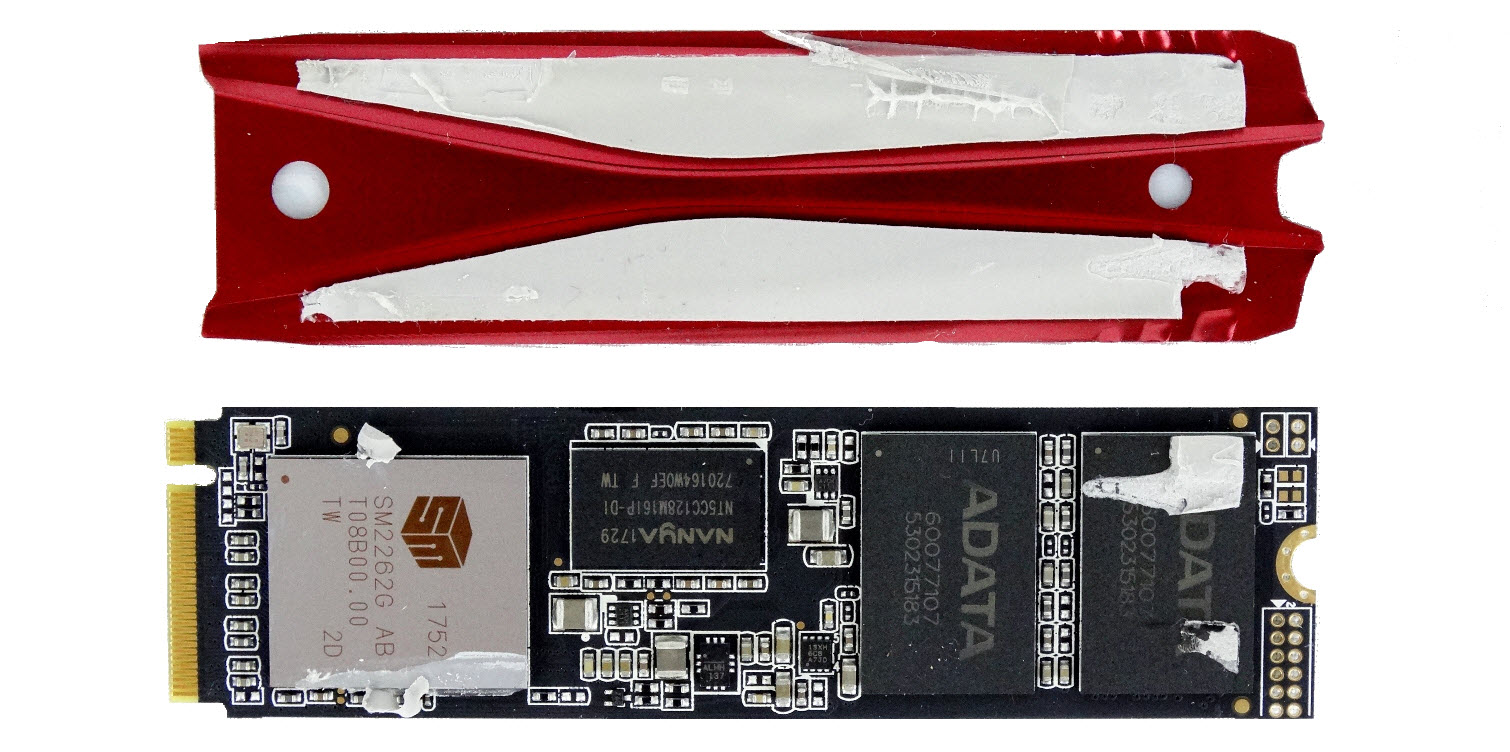Adata XPG GAMMIX S11 SSD Review: The Pricey Heatsink Option
Why you can trust Tom's Hardware
Conclusion
The Adata XPG GAMMIX S11 really comes down to one differentiating feature: the heat sink. Unfortunately, due to poor contact with the controller, the heat sink serves as more of a shield that traps heat close to the components.
We wouldn't recommend spending more for the GAMMIX S11 than the SX8200. The exception is if you wanted a bright red component in a windowed system that matches several other bright red components. The heat sink doesn't improve performance by a significant amount. We tested the SSDs in the same system slot and our maximum temperature difference across three measured workloads was no more than 2C. At idle and during a light QD1 read, the GAMMIX S11 and SX8200 reached the same temperature. We measured the 2C difference during a heavy QD32 write test. The SX8200 had the lower temperature due to its effective heat sink, which benefits from airflow in the system. That's more effective than the S11's heatsink that isolates the controller and traps in heat.
When it comes to performance, the GAMMIX S11 is still an upper-mainstream NVMe SSD. It performs about the same as the SX8200 and HP EX920, but the higher price makes it less of a value because you pay more for identical results. If you want the shiny red bling this is an easy way to get it, but don't expect increased function. Buying a red Camry doesn't make it an exotic Ferrari. It's still just a Camry with a markup for the premium paint.
UPDATE 7/19/2018: Pricing for the SX8200 and S11 models is now identical at multiple vendors.
MORE: Best SSDs
MORE: How We Test HDDs And SSDs
MORE: All SSD Content
Get Tom's Hardware's best news and in-depth reviews, straight to your inbox.

Chris Ramseyer was a senior contributing editor for Tom's Hardware. He tested and reviewed consumer storage.
-
krokozavrex In our market, S11 cost 5$ LESS than SX8200;) so do not be so cruel to S11, it is just a colour option:)Reply
